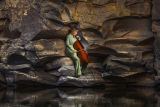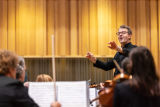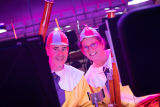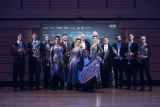A Very Brief History of the French Horn
By TJ Wilkshire
Blog ·
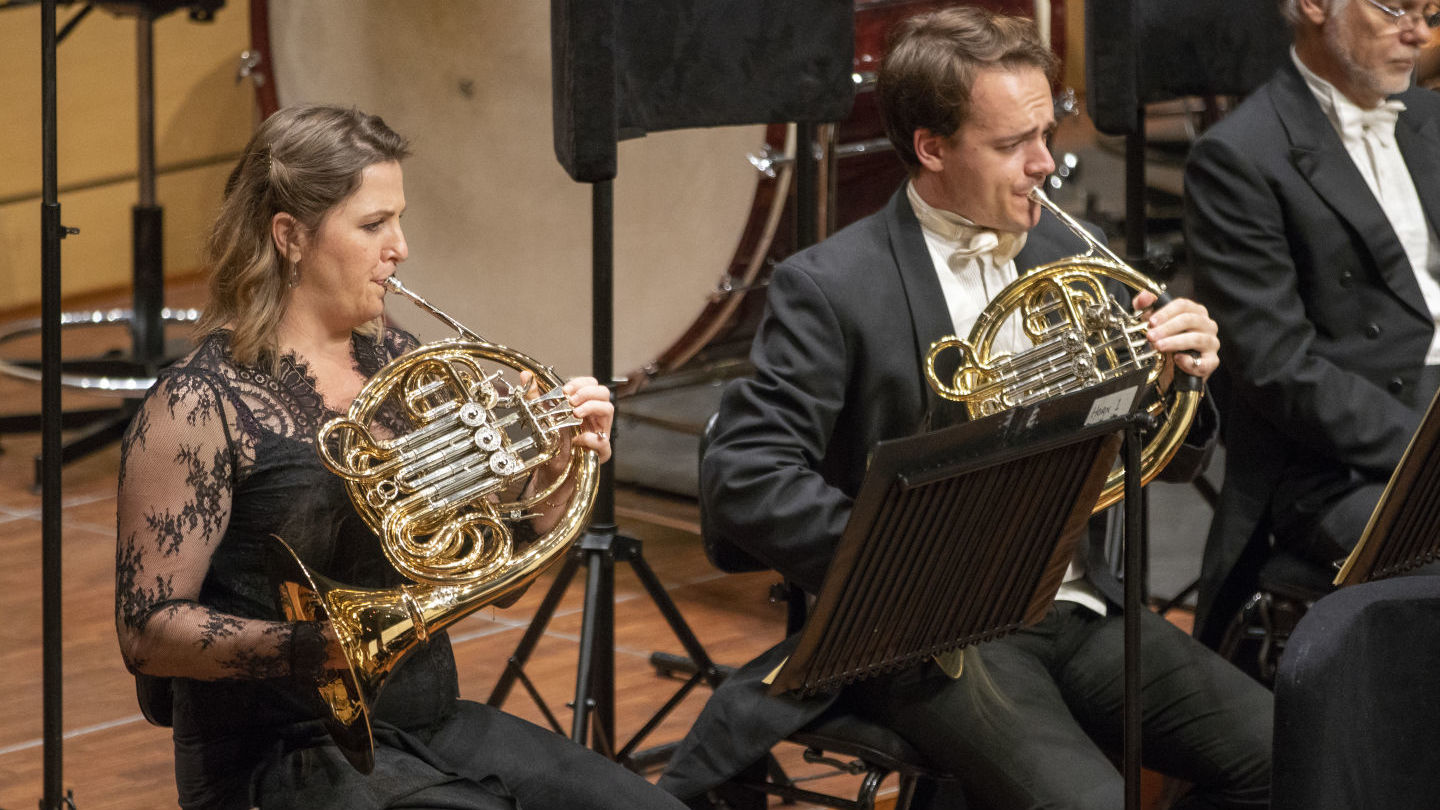
From hunting herald to modern magnificence, we track the historical journey of the French horn.
Known equally for its ability to plumb rich melodic depths and soar majestically to the high notes, the French horn is a notoriously difficult instrument. It is an integral part of the orchestra adding range and richness to the overall sound.
As we hum our way into the Christmas season, we’re unwrapping the instrument that shines (quite literally), and glancing backwards a few centuries to learn how it has evolved.
To say the French horn is the wild card of an orchestra is an understatement – this complex instrument can blend into the tapestry of orchestral sounds or carry the main melody. For French horn players, there is no hiding behind the music – everything is laid bare for the audience. The dexterity required of its players earns a great respect and even the occasional cracked note reminds audiences that instruments like these take decades to master.
This is an instrument that is demanding and precise. Technically a period instrument, the French horn has slowly evolved to enable a greater dynamic control and melodic range. With the ability to produce ear-splitting volume, it’s not uncommon for its players to experience some hearing loss during their career.
Despite the wild, untamed nature of this complicated instrument, we adore it, and wanted to learn more about how it evolved from the hunting ground to the stage.
#Bone to Brass
As you may have guessed, the very first horn was indeed made of horn. Far from the glorious melodies that we hear on stage during a performance of Wagner, Brahms, or Strauss, the original horn was used by humans during hunting expeditions and important religious rituals. These horns were often carved out from the horn or bone of the prey the hunter had killed.
Fast-forward a few hundred years to the Middle Ages where early metal horns made from brass tubes were created. During the middle of the sixteenth century, these horns were still used by hunters to communicate with each other further across the fields and forests. The bell of the horn faced away from the rider to stay out of his way and the coils were large so it could hang over his shoulder. This horn is closest to the natural horn we sometimes see on stage today during performances by period orchestras. However, the only way to change the pitch of this instrument was to alter the vibration of the lips - it could only play notes from a single harmonic series, making it difficult for composers to write for.
#From Hunting Ground to the Stage
The history of the French horn isn’t as simple as tracking one invention to the next. Other brass instruments come into play; inventors across Europe make additions to instruments that in turn influence others. Composers write concertos and adjustments are made – like everything in this world, there isn’t one linear history that can pinpoint exactly when the modern French horn was created. What we do know is that in the seventeenth and eighteenth centuries the hunting horn was being used for more than just hunting.
As the brass horn began to make its way into performances, the idea of being able to control the pitch and stabilise the tones was pitched (see what we did there?) and the valve horn was created. But, this ingenious solution wasn’t fashioned until the middle of the nineteenth century by German makers Heinrich Stölzel and Friedrich Blümel (who are widely considered as the fathers of the French horn). The arrival of the valve horn meant that musicians could play a more stable chromatic scale. By the end of the nineteenth century with the invention of the double horn (two valves) by Edmund Gumper and Fritz Kruspe, players were a step closer to the horn we see and hear on stage today.
#The Influencers
In the late 1710s composers J.S. Bach, Handel and Telemann played with the idea of featuring the horn as an instrument in concertos. J.S. Bach’s Brandenburg Concertos composed in 1719 showcase the horn as a feature instrument and clearly distinguished the instrument’s sound from the trumpet.
Another influencer (and the son of a leading horn player), Richard Strauss, grew up with the sound of the horn which led him to compose two incredible concertos at just 18 years old. A favourite among horn players today, Strauss’ concertos showcase the depth and colour of this incredible instrument (in particular, Horn Concerto No.1 is one of the most demanding solo works for the horn with its flurry of high and low notes in rapid succession).
#A few favourite French horn appearances
For No One
The Beatles
Who would have thought that one of the most popular bands in the history of music would showcase a classical instrument like they do in For No One. The song written about the end of a relationship features a French horn solo by Alan Civil that is at once cheerful and melancholy.
Morceau de concert in F minor, Op.94
Camille Saint-Saëns
At times soft and delicate, this composition by Saint-Saëns showcases the virtuosity of the French horn as an instrument that can stand out from the crowd. The accompanying strings in this piece really allow the horn to shine.
Star Wars Main Title
John Williams
Many French horn players today will say that Williams’ famous film score influenced their decision in choosing the French horn as their instrument. Williams’ use of the triumphant sounds of the French horn make the Star Wars theme exactly what it is.
Horn Concerto No. 1 in D
Joseph Haydn
Composed in 1762, Haydn Horn Concerto was intended to be played by Joseph Leutgeb, a prominent horn player who also had works composed for him by the likes of Mozart. Haydn's horn concerto is famous for its low range and thrilling first cadenza.
#More French horn
Dive into more of the French horn with a diverse playlist curated by our very own French horn player, Lauren Manuel.
